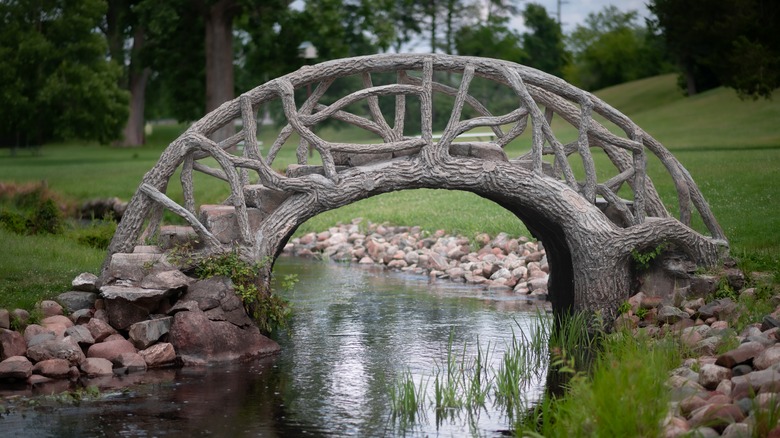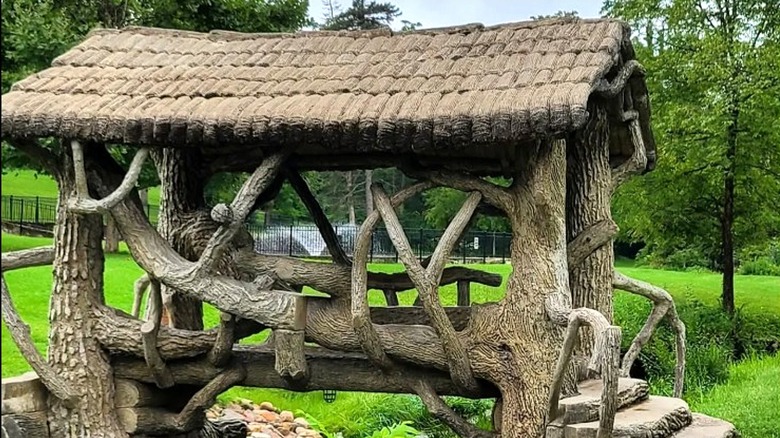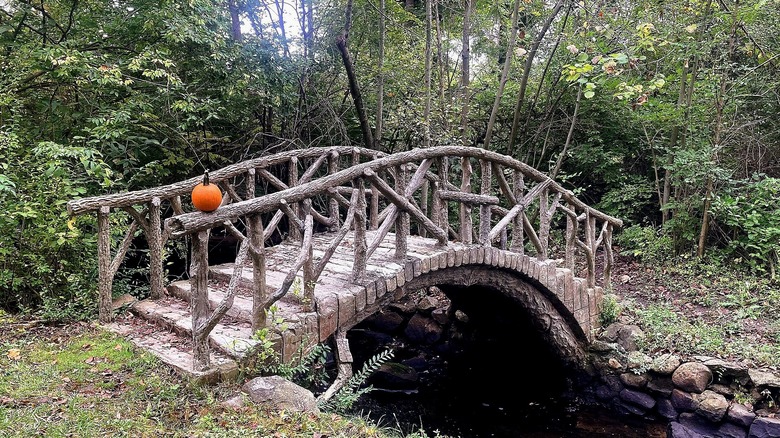A lot of public parks around the U.S. have the same features –- fields for sports and other outdoor activities, picnic tables, trees for shade, maybe a pond, or a dog park. However, few of them have what McCourtie Park in Somerset Center, Michigan, has. In addition to plenty of areas to have a relaxing picnic and tranquil nature walks to embark on, McCourtie Park has a fascinating history, a series of eccentric cement sculptures, and, according to legend, perhaps even a ghost.
McCourtie Park is located within the Somerset Township of Hillsdale County, which is about 65 miles south of the Capital Region International Airport in Lansing and 95 miles west of Detroit. Because the area is fairly remote, there aren’t a whole lot of lodging options in the immediate vicinity, with the Motel Somerset being one of the few in-town stays. However, within a 20-minute drive of Somerset Center, there are the Munro House Bed & Breakfast in Jonesville and the Devil’s Lake Inn in Manitou Beach.
This quaint rural community of Somerset Center is characterized by its proximity to seemingly countless beautiful lakes, charming farms, and rolling green hills, making it a surprising place to find such a quirky public park, as you’re about to learn. And while you’re in Michigan, check out another overlooked gem, a recreational escape with miles of scenic shoreline.
History and aesthetics collide at McCourtie Park
McCourtie Park began as a family-owned property that was developed by Herb McCourtie, a Somerset native who made his fortune in the oil business during his time in Dallas, Texas, and became even richer when he got into the cement business back home in Michigan. Upon his return to Somerset Center, he bought his family’s home and the surrounding area, turning it into a private luxury resort of sorts for himself that doubled as a community park that was open to the public. During Prohibition, McCourtie had a “rathskeller” — an underground beer hall — built beneath the sprawling grounds that was said to have hosted such prominent guests as Henry Ford and Al Capone.
However, one of the more eccentric features of the park that McCourtie ordered to be created was the series of 17 cement bridges and two elaborate bird houses placed throughout the grounds in the 1930s. What really made these structures so unique, though, was that they were created in the “trabajo rustico” style, a kind of Mexican folk art in which cement is crafted to look like wood.
Today, McCourtie’s house is no longer standing, and the rathskeller isn’t as happening as it used to be (renovations were done in 2023 so events could be held there). But the cement sculptures still exist and are maintained regularly. The site is listed on the National Register of Historic Places and serves as a pleasing backdrop for a laid-back picnic as well as community gatherings. In fact, the whimsy of the faux-wooden bridges makes guests feel like they’re in a more fantastical realm than that of a small farm town in Michigan. Still, Michigan has plenty of surprises, such as this picturesque artsy town offering charming streets and quiet waters.




